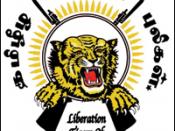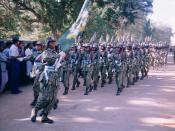Sri Lanka is host to one of the worldÃÂs most violent wars that has endured for most of the past 25 years, suffering hundreds of thousands of deaths in conflicts in both the north and south. Previous attempts to resolve the ethnic conflict between the Sri Lankan Tamils, who have traditionally inhabited the northern and eastern regions, and the Sinhalese, concentrated in the central and southern regions, have been tried since the 1950s, but to no avail.
After gaining independence from Britain in 1948, discord between the two primary ethnic and religious groups; the Sinhala-Buddhist majority and the Tamil-Hindu minority, flared into sporadic violence that has evolved over the years as the Liberation Tigers of Tamil Eelam, (LTTE also referred to as the Tamil Tigers) a combative organization, fight to create an independent homeland ÃÂ Eelam ÃÂ in the north and east of the island, whilst the Sri Lankan government remains intent on sustaining a unitary state.
The roots of this ethnic conflict date back to sixth century A.D when it was portrayed that Prince Vijaya was sent by Lord Buddha to establish a Sinhalese civilization which was incessantly threatened by the perpetually invading Tamils, viewed as adversaries of the Buddhist civilization. This age-old feud has persisted to the 21st century where, despite the thousands of deaths and countless negotiations between both the Sinhalese and the Tamils, the conflict appears no closer to settlement as the two groups have yet to decide on a fair compromise, a failure that has added intensity and complexity to the conflict.
Peace processes began in 1957 with the Bandaranaike - Chelvanayagam (B-C) Pact, which recognized Tamil as the language of a national minority, continuing with the Senanayake ÃÂ Chelvanayagam (S-C) Pact in 1965, which implemented a Tamil language regulation. Both Pacts were reneged,


